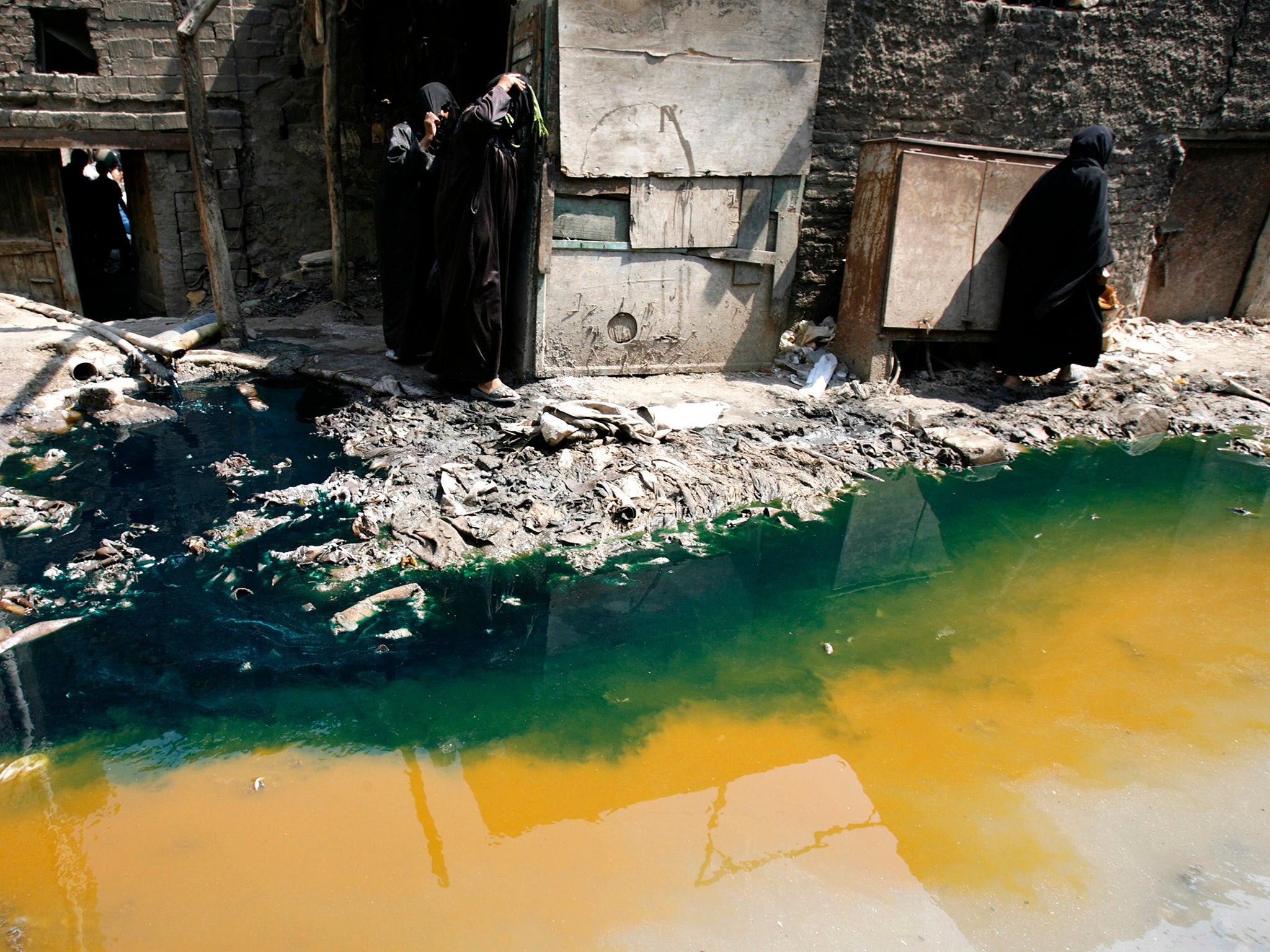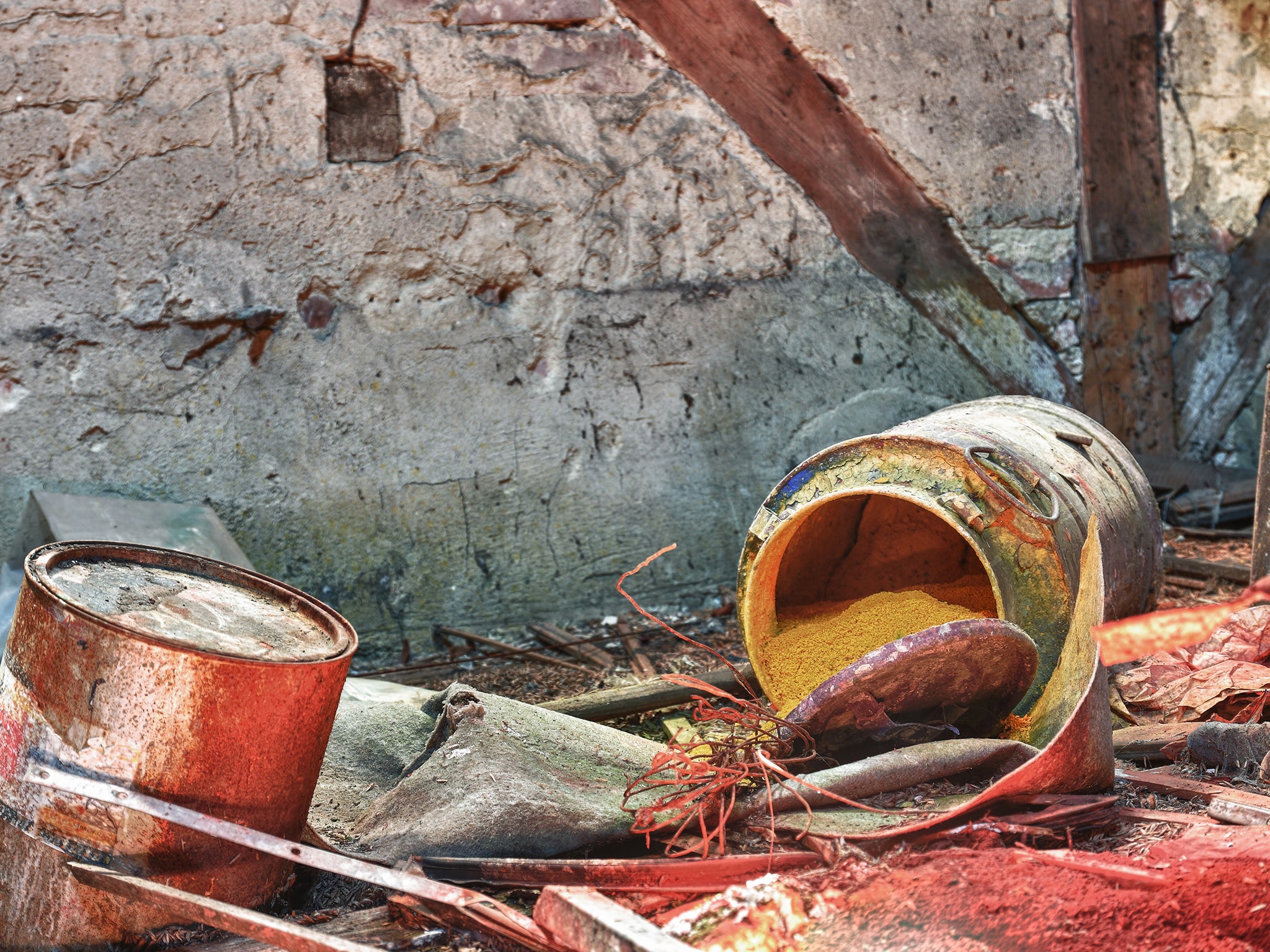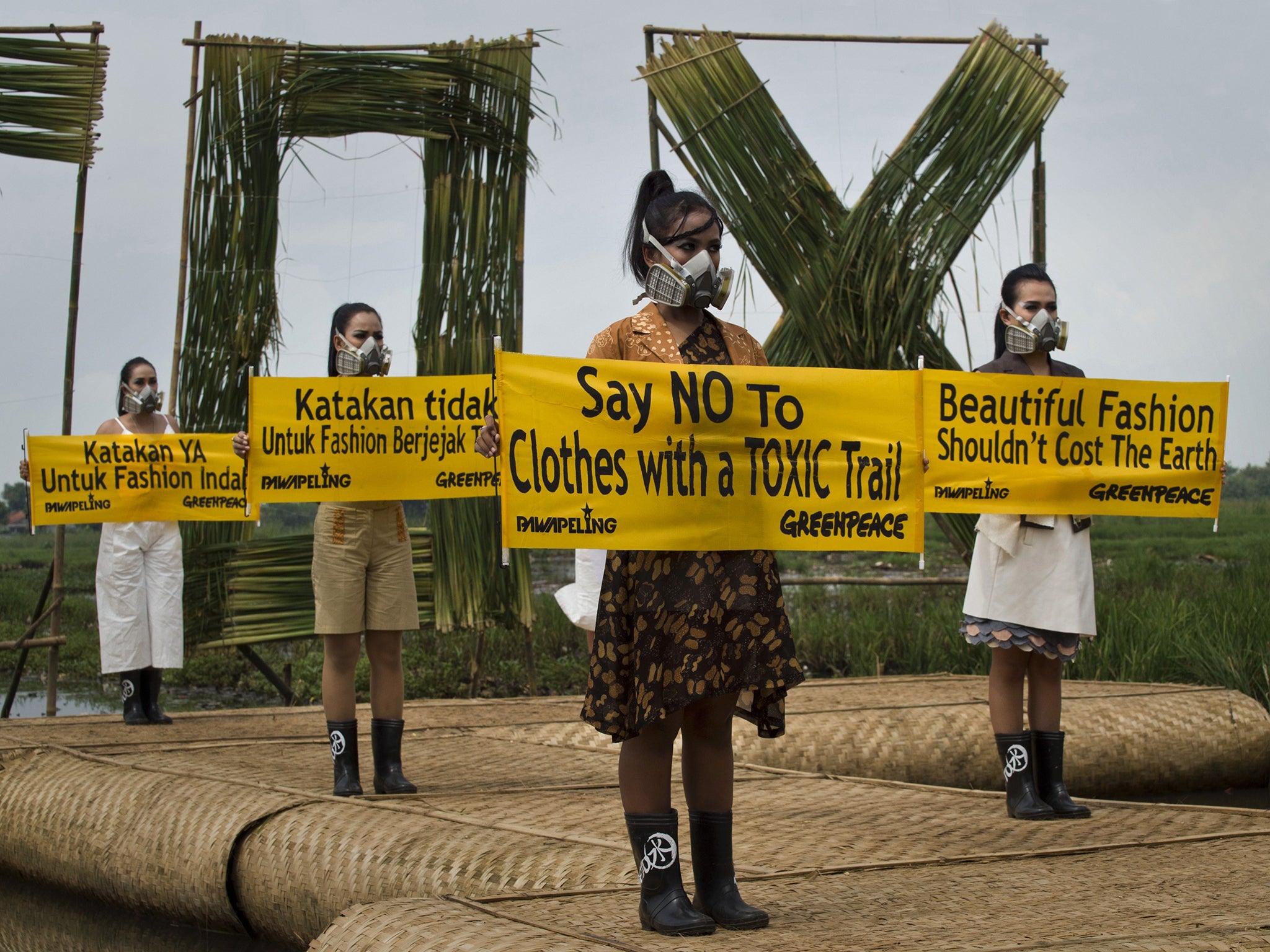The environmental costs of fast fashion
Water pollution, toxic chemical use and textile waste: fast fashion comes at a huge cost to the environment finds Patsy Perry

Your support helps us to tell the story
From reproductive rights to climate change to Big Tech, The Independent is on the ground when the story is developing. Whether it's investigating the financials of Elon Musk's pro-Trump PAC or producing our latest documentary, 'The A Word', which shines a light on the American women fighting for reproductive rights, we know how important it is to parse out the facts from the messaging.
At such a critical moment in US history, we need reporters on the ground. Your donation allows us to keep sending journalists to speak to both sides of the story.
The Independent is trusted by Americans across the entire political spectrum. And unlike many other quality news outlets, we choose not to lock Americans out of our reporting and analysis with paywalls. We believe quality journalism should be available to everyone, paid for by those who can afford it.
Your support makes all the difference.It’s tough to love our clothes and keep wearing them for longer when we are faced with a tempting array of newness on offer in the shops. But before you head out into the January sales for those irresistible deals, spare a thought for the impact of fast fashion on the environment.
Fast fashion focuses on speed and low costs in order to deliver frequent new collections inspired by catwalk looks or celebrity styles. But it is particularly bad for the environment, as pressure to reduce cost and the time it takes to get a product from design to shop floor means that environmental corners are more likely to be cut. Criticisms of fast fashion include its negative environmental impact, water pollution, the use of toxic chemicals and increasing levels of textile waste.
Vibrant colours, prints and fabric finishes are appealing features of fashion garments, but many of these are achieved with toxic chemicals. Textile dyeing is the second largest polluter of clean water globally, after agriculture. Greenpeace’s recent Detox campaign has been instrumental in pressuring fashion brands to take action to remove toxic chemicals from their supply chains, after it tested a number of brands’ products and confirmed the presence of hazardous chemicals. Many of these are banned or strictly regulated in various countries because they are toxic, bio-accumulative (meaning the substance builds up in an organism faster than the organism can excrete or metabolise it), disruptive to hormones and carcinogenic.
Polyester is the most popular fabric used for fashion. But when polyester garments are washed in domestic washing machines, they shed microfibres that add to the increasing levels of plastic in our oceans. These microfibres are minute and can easily pass through sewage and wastewater treatment plants into our waterways, but because they do not biodegrade, they represent a serious threat to aquatic life. Small creatures such as plankton eat the microfibres, which then make their way up the food chain to fish and shellfish eaten by humans.

The devastating impact of toxic chemical use in agriculture, for growing cotton, was shown in a documentary called The True Cost, including the death of a US cotton farmer from a brain tumour, and serious birth defects in Indian cotton farmers’ children. Cotton growing requires high levels of water and pesticides to prevent crop failure, which can be problematic in developing countries that may lack sufficient investment and be at risk of drought.
Most cotton grown worldwide is genetically modified to be resistant to the bollworm pest, thereby improving yield and reducing pesticide use. But this can also lead to problems further down the line, such as the emergence of “superweeds” which are resistant to standard pesticides. They often need to be treated with more toxic pesticides that are harmful to livestock and humans.
There is growing interest in organic cotton, with H&M and Inditex, the parent company of Zara, featuring among the world’s top five users of organic cotton by volume in 2016. But overall use of organic cotton represents less than 1 per cent of the world’s total annual cotton crop.
Hunger for newness
Textile waste is an unintended consequence of fast fashion, as more people buy more clothes and don’t keep them as long as they used to. The international expansion of fast fashion retailers exacerbates the problem on a global scale. Wardrobes in developed nations are saturated, so in order to sell more products, retailers must tempt shoppers with constant newness and convince them the items they already have are no longer fashionable.
Increasing disposable income levels over recent generations means there is less need to “make do and mend”, as it’s often cheaper and more convenient to buy new than have an item repaired. Busy lifestyles make many people more time-poor than previous generations, and with the loss of sewing and mending skills over time, there is less impetus to repair our garments. The rise of supermarket fashion that can be purchased alongside the weekly shop and the regular occurrence of seasonal sales make clothing seem “disposable” in a way it didn’t used to be.
There is interest in moving towards a more circular model of textile production which reuses materials wherever possible, yet current recycling rates for textiles are very low. Despite a long-established national network of charity shops and increasing numbers of in-store recycling points in UK high-street stores, three-quarters of Britons throw away unwanted clothing, rather than donating or recycling it.
What shoppers can do
So, can consumers reduce the environmental cost of fast fashion when out shopping? Choosing an eco-friendly fabric is complex as there are pros and cons to all fibre types. Garments which are labelled as being made from natural fibres are not necessarily better than synthetic, as fibre choice is only one part of a complex picture. Fibres still have to be spun, knitted or woven, dyed, finished, sewn and transported – all of which have different environmental impacts.
For example, choosing organic fabrics is better than choosing non-organic fabrics in terms of the chemicals used to grow the fibres, but organic cotton still requires high amounts of water and the impact of dyeing it is higher than the impact of dyeing polyester.

Recycled content is often best of all, as it reduces the pressure on virgin resources and tackles the growing problem of waste management. For example, Patagonia was the first outdoor clothing brand to make polyester fleece out of plastic bottles. In 2017, it decided to rationalise its T-shirt ranges and from spring 2018, will offer only two fabric options of either 100 per cent organic cotton or a blend of recycled cotton and recycled polyester, recognising that even organic cotton has a negative environmental impact.
The Love Your Clothes initiative from the charity Wrap gives information for consumers on each stage of the purchase process, from buying smarter, to caring for and repairing items, to upcycling or customisation and finally responsible disposal. Ultimately, the best thing we can do is to keep our clothing in use for longer – and buy less new stuff.
Patsy Perry is a senior lecturer in fashion marketing at the University of Manchester. This article first appeared on The Conversation (theconversation.com)
Join our commenting forum
Join thought-provoking conversations, follow other Independent readers and see their replies
Comments